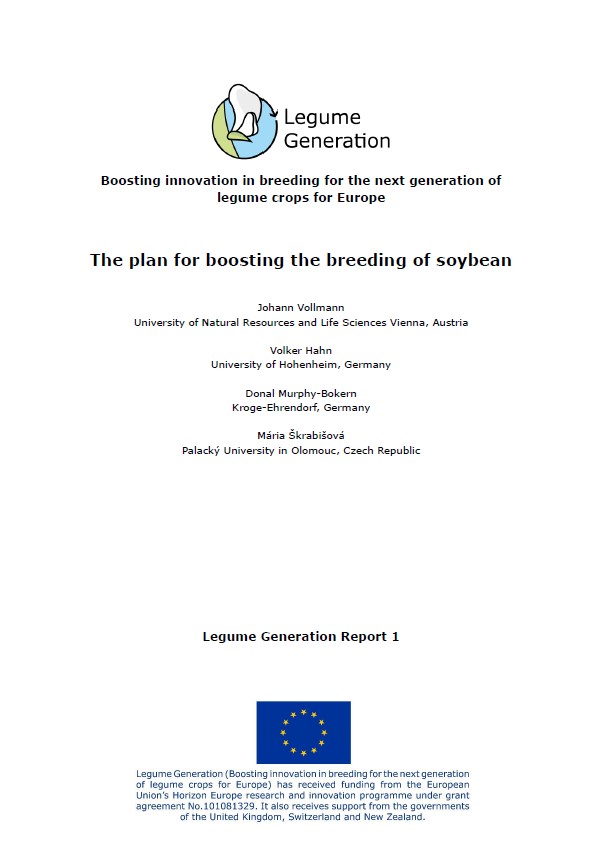Legume Generation Report 1
Johann Vollmann, Volker Hahn, Donal Murphy-Bokern and Mária Škrabišová
Soybean is the most widely grown, most protein-productive and most needed grain legume crop in Europe. It is an essential crop species for European efforts to increase plant protein production. To be chosen by farmers, soybeans or other legume crops must have a combination of crop output, value per unit output, benefits for the cropping system, and acceptable input costs to make the crop economically competitive with the other cropping options farmers have.
This plan to boost the breeding of soybean is about supporting our breeding partners and associates as risk-taking innovators. This links practical breeding across Europe with the supporting research-base in a transdisciplinary platform. Our collaboration combines innovation focus on soybean with synergies from across the project’s five other innovation communities. Innovation is supported up to the point where newly-bred germplasm and tools are demonstrated on farm at technology readiness level 7. In this way, the innovation harnesses science to improve our individual soybean breeding programmes.
The Soybean Innovation Community receives major input from previous projects of the network (Haberlandt project and other activities) and from Legume Generation through data access, improved phenotyping/genotyping methods, and general research support (supporting work packages, other crop ICs). The pathway to application follows the classical breeding schemes (selection of parental materials, hybridisation, selection in segregating generations, and later selection for environmental adaptation and stability in multi-environmental trials), finally delivering new cultivars to farmers.

